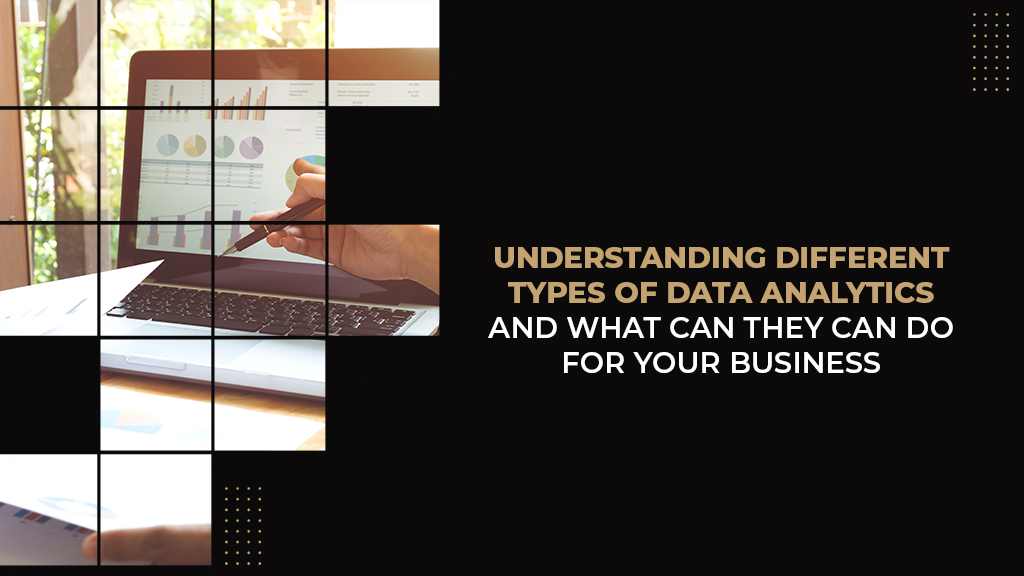Understanding Different Types of Data Analytics and What Can They Can Do For Your Business
The last year has shown the value of innovative uses of data and analytics, as companies shifted to accommodate rapidly changing circumstances. At the same time, other organizations struggled to keep up, wrestling with issues of how to gather, use, and manage data.
Before the pandemic in 2020, the need for data analytics skills was predicted to grow. In late 2019, LinkedIn reported that four of the top 10 in-demand skills for 2020 were related to data analytics. Even after the Covid-19 hit, LinkedIn reported that two of the top five fastest-growing skills were related to data analytics.
In this article, we will look at how the three types of data analytics (Descriptive, Predictive, and prescriptive analytics) are assisting corporations to better plan their automation platforms, content management systems, CRMs, and more.
1.
Descriptive analytics:
According to Gartner, Descriptive Analytics is the examination of data or content, usually manually performed, to answer the question “What happened?” (or What is happening?), characterized by traditional business intelligence (BI) and visualizations such as pie charts, bar charts, line graphs, tables, or generated narratives.
Descriptive analytics takes raw data and parses that data to draw conclusions that are useful and understandable by managers, investors, and other stakeholders, it uses a full range of data to give an accurate picture of what has happened in a business and how that differs from other comparable periods, A report showing sales of R1 million may sound impressive, but it lacks details, Historical data can provide a clearer picture of the financial situation and show you how that R1 million in revenues compares to previous months’ or years’ sales.
Similarly, a warehouse may need to understand why specific items are constantly out of stock, or over-ordered,a quick scan of historic data may show them that certain products have seasonal peaks and troughs, or that there have been too many orders of an unpopular product.
The two main methods in which data is collected for descriptive analytics are data aggregation and data mining.
Data aggregation
Data aggregation is the process where data is collected and presented in a summarized format for statistical analysis and to effectively achieve business objectives, data aggregation may be done manually or through specialized software called automated data aggregation. aggregated data can be performed over a period to provide statistics such as sum, count, average, minimum, maximum.
Data mining
Data mining is a process used by companies to turn raw data into useful information. By using software to look for patterns in large batches of data, businesses can learn more about their customers to develop more effective marketing strategies, increase sales and decrease costs. It can be used in a variety of ways, such as database marketing, credit risk management, fraud detection, spam Email filtering, or even to discern the sentiment or opinion of users.
Descriptive analytics provides important information in an easy-to-understand format. The need for descriptive analytics will always be there. However, there are more improvements in this field of analytics like predictive and prescriptive analytics.
2.
Predictive analytics:
Predictive analytics is a branch of advanced analytics that makes predictions about future outcomes using historical data combined with statistical modeling, data mining techniques, and machine learning.
A common misconception is that predictive analytics and machine learning are the same things. Predictive analytics help us understand possible future occurrences by analyzing the past. At its core, predictive analytics includes a series of statistical techniques (including machine learning, predictive modeling, and data mining) and uses statistics (both historical and current) to estimate, or predict, future outcomes.
On the other hand Machine learning is an application of artificial intelligence (AI) that provides systems the ability to automatically learn and improve from experience without being explicitly programmed.
Organizations incorporate predictive analytics to find patterns in data identifying risks and opportunities.
Predictive models are used for all kinds of applications, including: Translating voice to text for mobile phone messaging, Weather forecasts, Creating video games, Customer service to name a few, these use descriptive statistical models and available data to estimate, or predict, future outcomes.
Many methods are unique to specific products and services, but a core of generic techniques, such as decision trees, regression — and even neural networks — are now widely supported across a wide range of predictive analytics platforms.
Decision trees:
rely on a schematic used to determine a course of action or probability, they can also show every possible outcome of a particular decision and how one choice may lead to the next.
Regression technique:
This technique is often used in banking, investing and other finance-oriented models, to help users forecast asset values and comprehend the relationships between commodities and stock prices.
Neural networks:
These networks use algorithms that are designed to identify underlying relationships within a data set by mimicking the way a human mind functions.
Organizations can take advantage of this kind of statistical analysis to determine customer behavior. For instance, the owner of a business can use predictive techniques to identify and target regular customers who could defect and go to a competitor. or Companies can use models to determine which customers are likely to respond positively to marketing and sales campaigns.
3.
Prescriptive analytics:
prescriptive analytics factors information about possible situations or scenarios, available resources, past performance, and current performance, and suggests a course of action or strategy.
Prescriptive analytics depends on artificial intelligence techniques such as machine learning, to understand the data it acquires.
Thanks to information obtained through prescriptive analysis, it is possible for companies to make future decisions, such as:
- Calculate past sales of a product to determine the number of replacements.
- Know the tendency of customers in certain products to launch marketing campaigns, according to users’ needs.
- Predict equipment failures, which provides for maintenance at the right time.
- Know customers’ purchasing habits and punctuality of payment to determine whether it is appropriate to grant credit.
Prescriptive analytics can cut through the clutter of immediate uncertainty and changing conditions. It can help prevent fraud, limit risk, increase efficiency, meet business goals, and create more loyal customers.
You can get valuable recommendations to optimize the next steps in your strategy, OGT can assist you in finding a solution among various variants to optimize your resources and increase your operational efficiency. We utilize optimization techniques to indicate the path that you can take.


